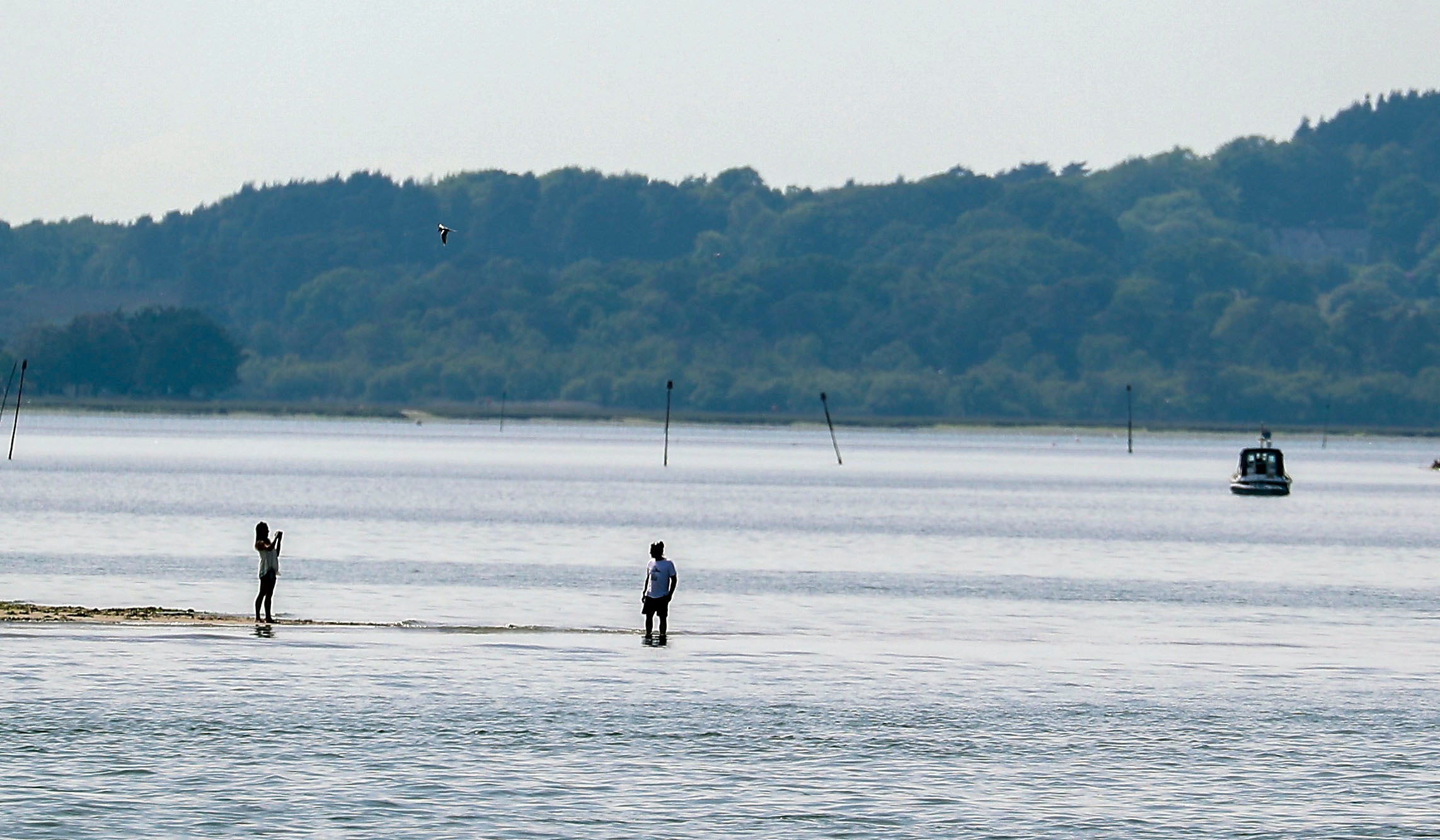Farmers told to slash nitrogen pollution flowing into Poole Harbour
Run-off from farmland is contributing to growth in green algae which has smothered native grasses and is affecting wildlife.

Your support helps us to tell the story
From reproductive rights to climate change to Big Tech, The Independent is on the ground when the story is developing. Whether it's investigating the financials of Elon Musk's pro-Trump PAC or producing our latest documentary, 'The A Word', which shines a light on the American women fighting for reproductive rights, we know how important it is to parse out the facts from the messaging.
At such a critical moment in US history, we need reporters on the ground. Your donation allows us to keep sending journalists to speak to both sides of the story.
The Independent is trusted by Americans across the entire political spectrum. And unlike many other quality news outlets, we choose not to lock Americans out of our reporting and analysis with paywalls. We believe quality journalism should be available to everyone, paid for by those who can afford it.
Your support makes all the difference.Farmers have been told they must more than halve the amount of harmful nitrates pouring into one of Dorset’s most picturesque harbours, in a bid to reverse decades of environmental damage.
Poole Harbour is a site of huge ecological significance in the UK, but dangerously high volumes of nitrogen entering the sea over the past 50 years have seen water quality plummet.
Nitrogen is a vital nutrient that gives plants the energy to grow and is widely used in synthetic fertilisers, and is also found in manure and slurry.
Excessive nitrogen pollution is harmful to biodiversity because it causes nitrogen-tolerant species to thrive at the expense of wild plants which are outcompeted.
The amount of nitrogen entering Poole harbour has more than doubled from about 1,000 tonnes per year in the 1960s to 2,300 tonnes annually now, according to the Environment Agency.
As result, its mudflats have been covered in green algae which has smothered the native sea grass and had a negative impact on the wetland birds and other wildlife.
The harbour is a site of special scientific interest (SSSI) meaning it is a priority for conservation because of its rare flora and fauna and its geological features.
It is also a special protection area (SPA), a designated site for the conservation of threatened and migratory birds, as well as a Ramsar site – signalling that its wetlands are of international significance.
Local farmers must now slash the amount of nutrient run off from their soils to a level that is no longer harmful to the environment, or risk a fine under the Environmental Permitting Regulations.
Under the Environment Agency and Natural England’s recommendations, nitrogen volumes flowing into Poole Harbour need to fall from 2,300 tonnes to 1,500 tonnes per year.
The recommendations also require the quantity of ortho-phosphate pollution, another chemical that stimulates excessive algal growth, cut from 51 tonnes to 22 tonnes a year.
The Environment Agency said farmers must now start to implement measures to reach the targets, and by 2023 must ensure nitrogen run off from their land does not exceed 18.1kg per hectare a year.
Strategies to cut nitrogen pollution include reducing the amount of bare land over winter by planting cover crops, which reduce run-off and suck the chemical down into the soils.
Farmers will have to avoid planting crops like maize on “high risk” land, specifically steep slopes with thin soil that are prone to leaching, and in some cases will have to cut their overall fertiliser use.
Farmers can also join an Environment Agency-approved scheme that allows those that have reduced nitrogen pollution below the required levels to trade credits to farmers looking to offset their nutrient losses.
Nikki Hiorns, manager for Natural England, said: “Poole Harbour is a unique and special place for wildlife and people.
“Everyone wants to keep it that way so setting these new tighter water quality targets is an important start to restoring water quality in the harbour and improving the catchment.
“Reducing the nutrients entering the catchment and restoring the harbour is achievable, but only by continuing to work with farmers and other stakeholders.”
The Environment Agency said they will be providing farmers with new modelling tools to calculate nutrient loss and report their results.
The agency said farmers not providing data were likely to be prioritised for inspection.
Giles Bryan, senior Environment Agency technical specialist in the Wessex area, said: “By working together we will enable sustainable food production, water supplies and waste water treatment, whilst protecting the environment and securing the future of this fantastic place for wildlife and people.
“This plan will ensure all sectors that have contributed to rising nutrient concentrations in the catchment will proportionally deliver the improvements and solutions this unique environment needs.”